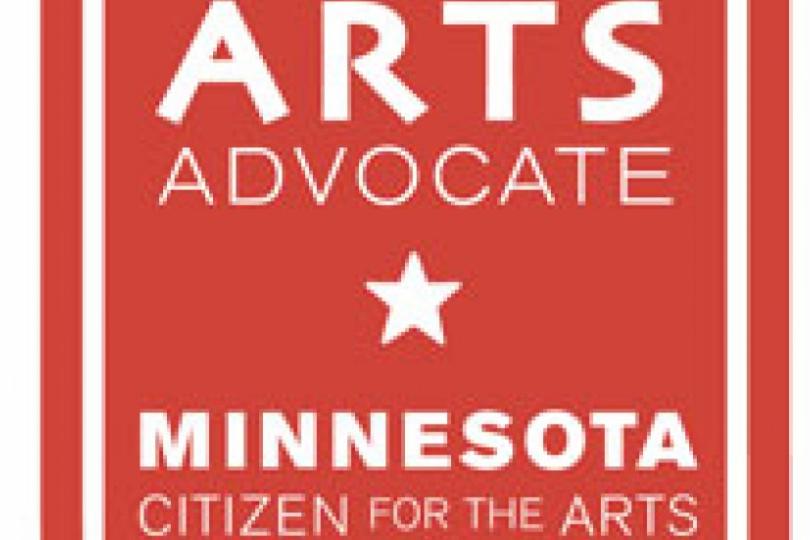“Yeah! We’ve got this!”
Editorial

As I walked into the State Capitol on March 8 for my second Arts Advocacy Day, worker protests in Madison, Wisconsin were on my mind. Watching so many Midwesterners stake a claim at their State Capitol, just one state over, while expressing opinions peacefully but forcefully, was inspirational—in part because of how local the action was. No one was waving signs about Obama, or Boehner or any other national figure. The protestors were challenging changes in their state and their communities. It was a bracing reminder that much of the time, when things get done in politics they get done on the local level.
So while huge, important funding battles about the NEA, PBS and NPR are raging nationally, more often than not a state legislature’s policies on initiatives and funding will most directly affect the arts community in which you live and work. This isn’t to say that artists, or any concerned citizen, shouldn’t engage with politics on a national level. But facing down issues related to arts on the local and statewide levels has a visceral immediacy.
That’s why Arts Advocacy Day is such an invigorating, inspirational, occasionally frustrating, but mostly exciting event. You’re up there on the hill with hundreds of other members of the Minnesota arts community, many of whom you know well. During the morning assembly, there’s a sense of camaraderie and solidarity, a sense of critical mass in knowing that people who share your values are sitting down with lawmakers to discuss why art is important. As you pass each other in the halls, rushing to your meetings, catching glances at each other, exchanging grins, you share the feeling of, “Yeah! We’ve got this!”
The day actually begins with attendees gathering in the Minnesota History Center’s auditorium to review talking points for the day. In this case, were asked to express the following ideas to our legislators:
1. Don’t cut the arts disproportionately and
2. 50 percent of arts funding from the Legacy Amendment should go to the Regional Arts Council system.
Three speakers addressed us. Sheila Smith, executive director of Minnesota Citizens for the Arts, ran the program quickly and efficiently, with admirable thoroughness as she explained what to do, where to go, what to say and how to say it. Michael Robins, executive producing director of the Illusion Theater, received an award for his arts-advocacy work. He gave a short, beautiful speech about his experiences, a quarter-century ago, in realizing artists could advocate for their own beliefs in the political arena as much as anyone.
Larry Redmond, a lobbyist for Minnesota Citizens for the Arts, gave the keynote. Man, I could have listened to him for hours. He spoke in sparkling, perfectly formed phrases that expressed the difficult realities of funding arts in this economic and political climate (given the State of Minnesota’s enormous deficit), but also expressed optimism about art’s importance and our role as arts advocates for the day. Really, if I wasn’t an artist already, Redmond could have convinced me to immediately become one. I felt profoundly glad this guy is talking to legislators on our behalf.
One last review of the talking points and off we went in groups to meet our representatives and senators. Now, the idea of “talking points” may strike someone unfamiliar with this kind of civic engagement as inauthentic or disingenuous, as too canned. However, the talking points are like armature around which to build your own complex, eloquent argument, if time permits. Or they can stand alone, communicating your message simply, if you need to quickly make your case.
My group—we all live or work in South Minneapolis—meets with two legislators. The first is a little harried. She’s late to a hearing and we catch her in the hall. She’s polite and listens carefully, but—this is sometimes true of Arts Advocacy Day meetings— it’s weird to stand in a hallway speaking passionately about your life’s work while knowing there’s not enough time to express yourself before your legislator has to rush off. But that’s politics. Sometimes you get a legislator’s full attention; sometimes you don’t because of extenuating circumstances. The latter is when talking points come in handy.
The second meeting is exactly the kind you hope to have during Arts Advocacy Day. Sen. Jeff Hayden invites our whole group into a spacious hearing room to sit and talk. He’s incredibly generous with his time, going well over the 20 minutes allotted (he even ignores the mild protestations of his administrative assistant that he has another meeting soon). Hayden’s an arts advocate, so we know we’ve got his vote. Still, our meeting with him is instructive.
Hayden knows the specifics of arts programs in our neighborhood: the new fire arts center, the recording studio for teenagers in the park, the theater space on Chicago. He knows the people involved and the influence the arts have on his constituents’ lives. He knows art is a force for good that creates jobs, gives opportunities to youth, and makes our neighborhood a better, safer, more interesting place to live. He listens to us, asks questions, and educates us about what we can do to help him—which representatives to contact, what to say. Our meeting with him is a very rich experience.
If your only interaction with elected officials is via YouTube, you forget politicians need to get close and personal to succeed. He or she needs to know how to talk to a constituent, while making that constituent feel as though they’re being listened to—a quality largely lost on television or video (although Bill Clinton knew how to project it). The late monologist Spalding Gray once enthused about speaking with a diplomat on some issues and then realizing, “I’d met a politician before, but I’d never met a statesman!” When you meet a politician who knows what he or she is doing—like Sen. Hayden—you feel as if you’ve met (excuse my gender-specific noun here) a statesman.
We’re done by 1:00 p.m., and 700 arts advocates wrap up their meetings and return to their arts administrative jobs, studios, classrooms or homes. I leave feeling our numbers spoke loudly and clearly about the importance of arts in Minnesota. I also realize participation in Arts Advocacy Day isn’t just a one-time pat on the back for “doing your part.” It’s also a reminder that legislators are people we can talk to, and who (generally) will listen. Moreover, legislators need to be told, as much as possible, what art means to you and what you want them to do about it.




